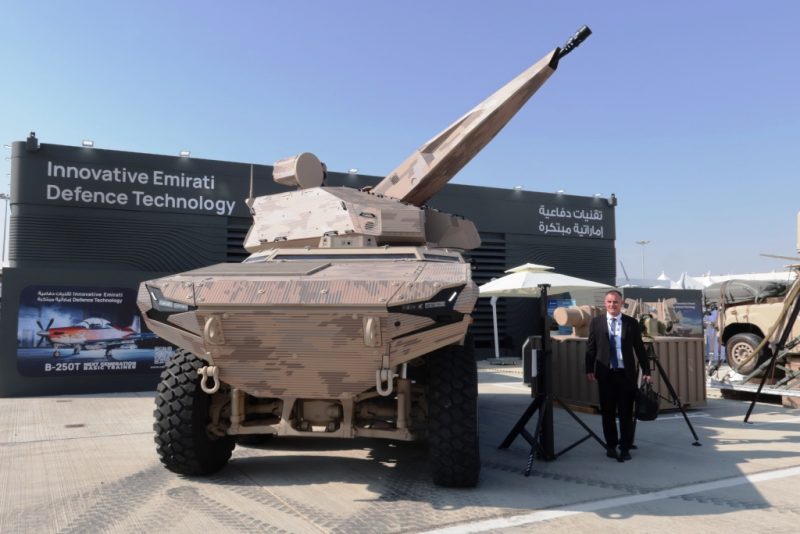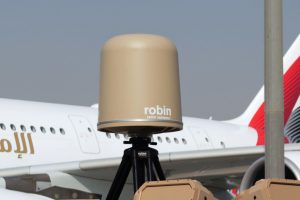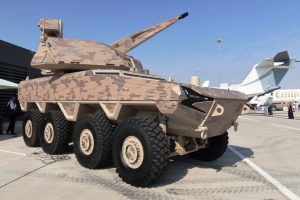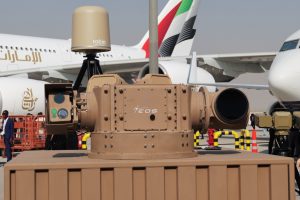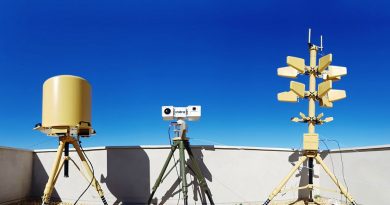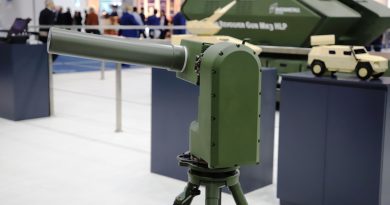Dubai Airshow 2025 – Calidus unveils DAMITA, its C-UAS solution against swarm attacks
Layered solutions have long been considered the best option for defending against drone attacks, especially when these are carried out by swarms of UAVs. Calidus, the UAE defence group involved in armoured vehicles and aviation products among others, unveiled in Dubai the DAMITA, a system that brings together three hard-kill and one soft-kill systems, managed by a robust command and control layer
DAMITA is quite a complex acronym which is worth detail as it explains many things about the system: D for drone defence, A for autonomous air defence system, MI for missile defence, i.e. against cruise missiles, T for technologically advanced, and A for aerial dome.
DAMITA is designed to be mobile, as all its elements are installed on armoured vehicles, allowing quick redeployment as well as convoy protection. Considering the increasing autonomy of drones, thanks to the advent of artificial intelligence, jamming their link with the ground control station or spoofing the satellite signals allowing them to navigate will become soon insufficient to neutralise them. What is good today against UAVs derived from commercial ones will quite probably not be enough for military drones under development.
Before “killing” drones, first thing to be done is detect them and identify them. For this DAMITA relies on the IRIS 3D radar provided by Robin Radar Systems, the company name coming from the original project launched in the Netherlands in the 1980s, the “Radar Observation of Bird INtensity”, something that was definitely a precursor of what would be needed years later with the proliferation of micro- and mini-drones, one of the key issues being differentiation between birds and drones. The IRIS ensures a 3D elevation accuracy of 1°, a range accuracy of 0.6 metres and an angular accuracy of 0.6 – 0.75°. At the show this X-band radar was shown on a tripod, however when the DAMITA will be fully implemented it will be installed over a light armoured vehicle, namely Calidus MATV, the 14-tonne 4×4 that was unveiled at IDEX earlier this year; the mast mounted solution is favoured by the light mass of the radar which is only 29 kg. The IRIS combines a 360° azimuth observation with a 60° elevation and a 5 km instrumented range, and can operate also on the move up to 100 km/h, detecting flying objects with speeds up to 100 m/s (360 km/h). The MATV also hosts an optronic system, in the form of an optronic system with day and night channel provided by OpenWorks engineering of the UK, which ensures day detection and identification ranges of respectively 8 and 3 km, detection range at night being 3 km against a DJI Phantom 4 UAV.
Another sensor that allows detecting and identifying incoming threats is the radiofrequency scanner, provided by Aaronia. It monitors all frequency bands between 20 kHz and 8 GHz, and when fitted with the long range antenna its detection range is between 20 and 80 km, environment playing a role in that.
Also provided by Aaronia is the only soft-kill system of the DAMITA, a jammer featuring a directional antenna that allows disrupting datalink signals at 5 km distance, the range being reduced to 3 km when using an omnidirectional antenna. The latter allows operating on the move, while the directional option needs the vehicle to be stationary.
Dominating the Calidus outdoor stand was the Sweihan, the name given to what was known until now as LIFV, for Light Infantry Fighting Vehicle, unveiled at IDEX last February. The 8×8 flat removable roof allows for easy integration of different turrets, and in the C-UAS/VSHORAD role that it has within the DAMITA system it was fitted with a Rheinmetall Skyranger 35 turret. This turret, together with the 30 mm calibre version, is obtaining considerable success Of course to deal with the intended targets, and especially with drones, the availability of an airburst munition is key, Rheinmetall inheriting the experience of Oerlikon Contraves AHEAD round, which is now declined in various configurations both in the 35 mm and the 30 mm calibres, under the new acronym KETF, for Kinetic Energy Time Fused, the cylinders payload having been adapted to more than one mission.
A second gun-based hard kill effector is part of DAMITA, but was not visible in Dubai. This is the R800 turret by Electro Optic Systems (EOS) of Australia, which primary armament is Northrop Grumman Mk44S 30 x 173 mm dual feed cannon with 200 rounds, capable to shoot proximity fused ammunition that would generate a second defensive layer to neutralise those drones that escaped the 35 mm treat.
Neutralising a drone can be done also concentrating sufficient energy on its surface, melting vital elements of its control system or cutting off some of its aerodynamic or propulsion elements. This is done by the high energy laser (HEL) system, also provided by EOS of Australia, output power available being in the 50-150 kW range. In August 2025 the company announced it won a contract from a NATO nation for a 100 kW version of its laser system. The shelterised HEL was visible as a stand-alone system in Dubai, but this would be installed over two trucks, one carrying the laser itself and one the much needed energy generation system. The maximum engagement range is estimated at 3 km, shortest range being 200 metres. The system exhibited at Dubai was fitted with the electro-optic suite including day/night sensors and a laser rangefinder. To engage the first target 0.8 seconds are needed to aim the laser, a second target lock happening 0.7 seconds after the first one has been neutralised, time on target depending on distance, weather conditions and the type of target itself.
Considering the close link between Calidus and Canberra-based EOS, the fact that the latter announced in mid-November that it entered into an agreement to acquire the Interceptor business of UK-based defence manufacturer MARSS Group might well add this killer-drone. The Interceptor was unveiled at WDS 2022, and at WDS 2024 it was declared close to production.
Moreover MARSS comes into play in the DAMITA as it provides the artificial intelligence-powered command and control system that among other functions provides target classification, the kill chain maintaining of course the man-in-the-loop. The C2 suite is of course shelterised to be mobile, installed on high mobility trucks, a very tight integration allowing maximum effectiveness reducing to a minimum the time needed to present the solutions to the operator, who has a very short time to react.
Being mostly based on military-off-the-shelf systems, the DAMITA should be available soon for testing, although no timeline was provided, as well as no comments were made on the UAE defence forces interest in the system, which should however be quite obvious.
Photos by P. Valpolini

